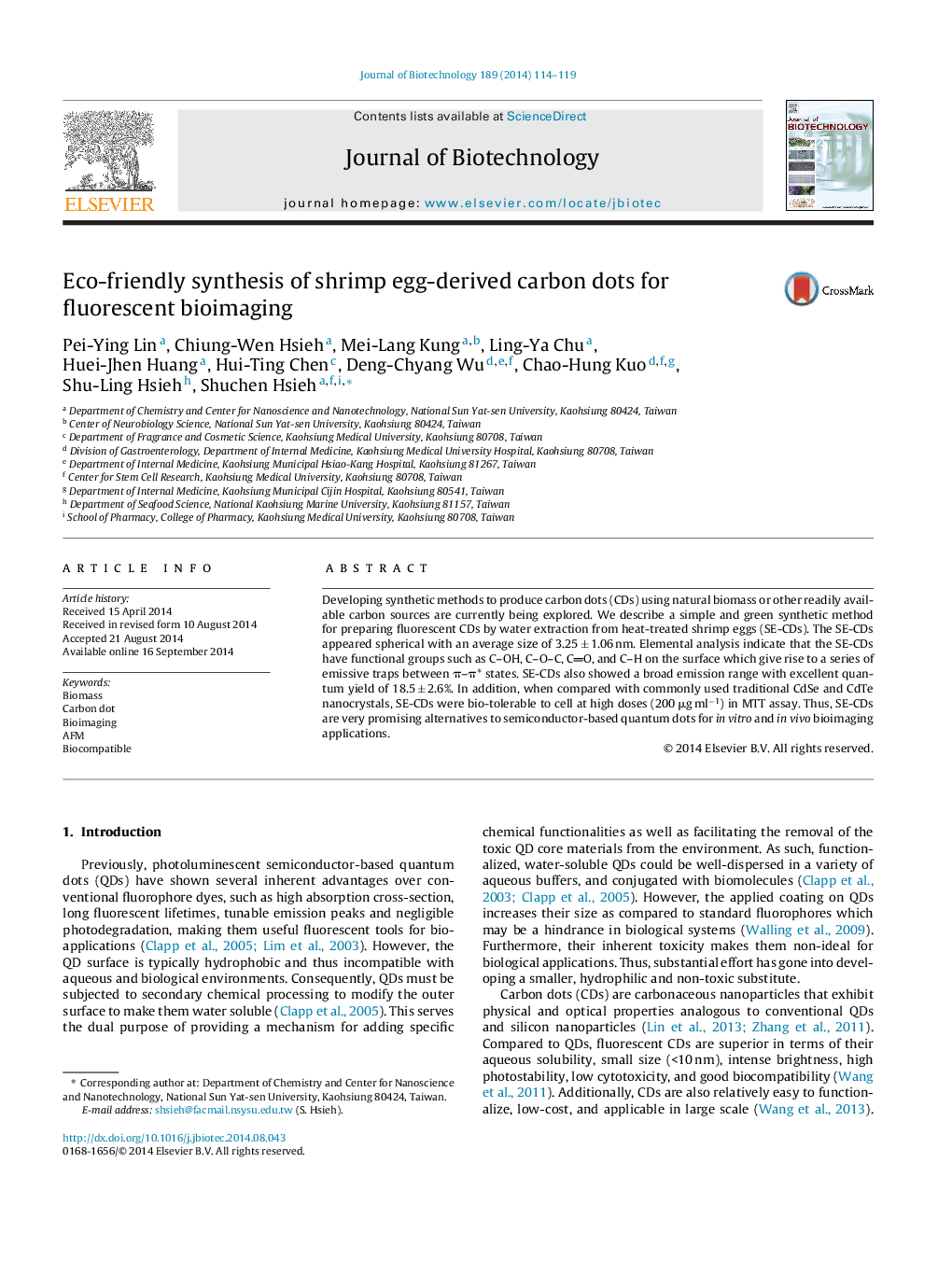| Article ID | Journal | Published Year | Pages | File Type |
|---|---|---|---|---|
| 23073 | Journal of Biotechnology | 2014 | 6 Pages |
•We used Shrimp egg as a carbon source for the fabrication of fluorescent CDs.•AFM images show the SE-CDs are spherical and monodispersed on Si substrate.•SE-CDs exhibit good water solubility with no further surface modification required.•SE-CDs are highly biocompatible and efficiently taken up by cells.
Developing synthetic methods to produce carbon dots (CDs) using natural biomass or other readily available carbon sources are currently being explored. We describe a simple and green synthetic method for preparing fluorescent CDs by water extraction from heat-treated shrimp eggs (SE-CDs). The SE-CDs appeared spherical with an average size of 3.25 ± 1.06 nm. Elemental analysis indicate that the SE-CDs have functional groups such as C–OH, C–O–C, CO, and C–H on the surface which give rise to a series of emissive traps between π–π* states. SE-CDs also showed a broad emission range with excellent quantum yield of 18.5 ± 2.6%. In addition, when compared with commonly used traditional CdSe and CdTe nanocrystals, SE-CDs were bio-tolerable to cell at high doses (200 μg ml−1) in MTT assay. Thus, SE-CDs are very promising alternatives to semiconductor-based quantum dots for in vitro and in vivo bioimaging applications.
